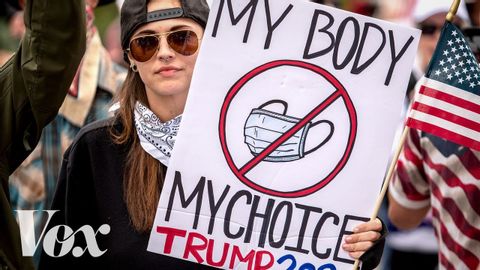Why face masks became political in the US
林宜悉 が 2020 年 08 月 22 日 に投稿  この条件に一致する単語はありません
この条件に一致する単語はありませんUS /səˈner.i.oʊ/
・
UK /sɪˈnɑː.ri.əʊ/
US /ˈkraɪsɪs/
・
UK /'kraɪsɪs/
US /ˈkɑnˌflɪkt/
・
UK /'kɒnflɪkt/
- n. (c./u.)対立;対立;戦争;内なる葛藤
- v.t./i.矛盾する : 衝突する
- v.t./i.進化させる;展開する;進化する;変遷する
エネルギーを使用
すべての単語を解除
発音・解説・フィルター機能を解除

